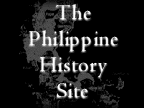Outbreak
of Cholera Epidemic
In
1902, many of the war casualties succumbed not only
to gunfire but to cholera. Noted Filipino historian
Reynaldo Ileto argues that the spread of the cholera
epidemic was an extension of the Philippine-American
War. In March, 1902 a vessel from Hongkong arrived in
Manila carrying cholera. Soon after, the first cases
of cholera surfaced. Cholera was impossible to contain
because the Filipinos and even the American troops themselves
moved around carrying the bacteria. Cholera was not
selective; it claimed as victims people from different
strata of society and ethnicity - elite, masses, Filipinos,
Americans, Spaniards and Chinese. But the lower classes
were the hardest hit, especially in certain districts
of Manila, because of the "overcrowding, poor sanitation,
and poor diet." By the time the epidemic ended,
about 109,461 died, 4,386 of which were in Manila.
Ileto
describe the Filipinos’ traditonal response to
cholera. In Tayabas (present day Quezon province), southern
Luzon, local medicos prescribed medicines extracted
from the manungal tree (Samadera Indica)
which was grown in that province. Another traditional
mode of treatment was the belief that the victims ought
to undertake a pilgrimage to Mount Banahaw in fulfillment
of a panata, or pledge, to supernatural beings
who could heal the sick.
In
contrast, the cholera epidemic gave way to what Ileto
calls "germ warfare", another stage of the
Philippine-American War. During this time, military
surgeons became the next wave of "pacifiers"
after the cavalrymen and troops. Searches and surveillance
were conducted among Filipino homes to ferret out the
sick and quarantine them. The Filipino response was
concealment and evasion since they refused to part with
their sick family members.
Within
the cholera combat zone, colonial officials prohibited
gatherings of people in places considered conducive
to the spread of cholera like churches and cockpits.
Officials also resorted to burning the houses of cholera
victims and even gathering places like the town market.
By cremating cholera casualties, they elicited further
resistance and hatred among Filipinos whose religious
practices demanded proper burial.
Ileto
notes that powerful drugs, strict quarantine, and cremation
of the dead did not end cholera. Rather, it was the
combination of heavy rains and the increasing immunity
of the populace that caused the epidemic to subside.
Nonetheless, the cholera episode introduced the Filipinos
to modern medicine and sanitation, and further incorporated
the Filipinos into the colonial order.
|

